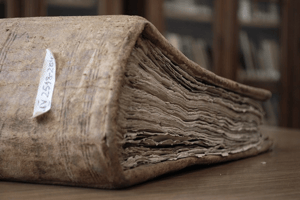HVAC Design Considerations for effective and Versatile Filter Performance
 The presence of airborne pollutants, both particulates and gases, can be damaging to any museum collection or exhibit. Particles in the form of dirt, skin, salt, hair, etc., can rapidly collect on artifacts and display spaces if not properly managed.
The presence of airborne pollutants, both particulates and gases, can be damaging to any museum collection or exhibit. Particles in the form of dirt, skin, salt, hair, etc., can rapidly collect on artifacts and display spaces if not properly managed.
Once this layer of dust forms, it makes an easy meal for small organisms and bugs, which can then lead to mice and other rodents. All of these are unwelcome guests in a museum, as their feeding activity and presence alone will assuredly cause damage to sensitive materials.
To combat the presence of unwanted particles, particulate filtration with a MERV 15 rating is typically sufficient for gallery spaces. Gaseous pollutants, on the other hand, exist in a wide variety and can be difficult to anticipate.
The presence of unwanted gases can be treated by testing a gallery’s air and installing the appropriate media inside the air handling system’s gas-phase filter rack. The key here is to ensure that the HVAC equipment can accommodate a gas-phase filter bank that can be changed out according to the gases that are present.
Incorporating this type of flexibility into your HVAC design is important because gases will vary depending on the time of year, the current artifacts in the gallery, the building location, and other factors.
Ozone is a gaseous pollutant produced by vehicles, office equipment, and paints to name a few, and can cause artifacts with leather attributes to become brittle and deteriorate sooner.
Sulfur dioxide is an off-gas from combustion engines, fireworks, active volcanoes, and more. It puts artifacts in danger due to its ability to fade colors on paintings and clothes, darken photographs, and cause paper material to deteriorate.

Many other gaseous pollutants exist and should also be considered. These include formaldehyde, ammonia, nitrogen oxides, and hydrochloric acid. Each of these gases require specific filter media.
Common filter media materials include carbon, activated carbon, and potassium permanganate, to name a few.
When a building is new or has recently been renovated, the new furniture, paint, finishes, and equipment will all produce gaseous pollutants at a rapid rate for the first few months. It is important then, to provide a period of time in a project’s schedule to allow the HVAC equipment to operate and flush and filter out these pollutants before valuable collections are placed into the galleries.
Periodic air sampling should be provided and can determine when it is safe to populate galleries with artifacts.
To conclude, understanding proper filter media sizing, selection, and compatibility is often the first line of defense against destructive pollutants that are either introduced or pre-existing within a gallery space. Long term issues and exhibit complications can be greatly reduced by ensuring that museum HVAC equipment is routinely checked and supplied with filter media that match the needs of the system and space.
With a firm understanding of your specific air filtration needs and HVAC equipment capabilities, it may be time to turn your attention to another critical museum air quality issue; condensation prevention.
OR
<< Go back to Part 1, where we itemize key considerations for high performance HVAC design.
